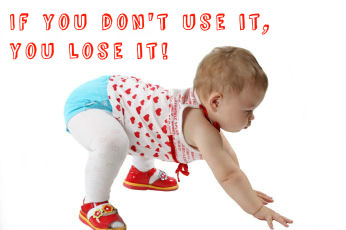Dr Stuart McGill, an expert on spinal health, brought up some valid points in this article - https://www.t-nation.com/training/doctors-view-of-crossfit
Here is my opinion:
I had previously been involved in crossfit for about 4 years, mostly training myself and competing in local comps, I joined a box (cross fit gym) for 6 months and then stopped crossfit altogether. This was long before there was a box on every corner and the words “wod”, “snatch” and “kipping” were so commonly known. I’ve seen a lot of different boxes and coaches and experienced them first hand as well as from a distance. I’ve also watched many a crossfitter compete and train and the same pet hates rear their ugly heads each time.
I will keep this short, sweet & to the point…here is a list of my issues with crossfit:
Most boxes don’t assess an individual's movement capacity prior to throwing them in a class nor do they take a record of their previous injuries…therefore leaving them open to risk of injury! It is the coaches responsibility to ensure each individual is training to THEIR individual capacity and to keep them safe from harm.
Scaleable does not = safe…one size does not fit all, just because you scale a movement for someone does not mean that the particular movement or the combination of movements in a particular workout aren't harmful for that individual.
The programming is just as advertised, “random” - often unqualified level 1 cross fit coaches are programming wods and bunching together random movements that as a workout can place excessive load on certain structures which can lead to injury or cause repetitive strain.
Not having at the very least a basic Cert III Fitness Training qualification as a coach (Cert III is even far from enough in my opinion).
Not having a clue about the human body; motor control or biomechanics and being a coach…as a result not knowing HOW to correct someone’s form in a way that works for THEM or not having the ability to assess someone's movement capacity before they even start crossfit.
Repeating the same movement (i.e. olympic lifts; chin ups; ghd sit-ups) within an extremely high rep range (50-100 reps) is only asking for fatigue and injury to come onboard. If endurance is what you want…pick your movements carefully!
Don’t believe or think peeing yourself is ok during a workout…this should NOT be happening!
Teaching someone how to snatch/clean & press in 10mins....followed by allowing that someone to load a snatch/clean & press the next time they're in the gym and/or encouraging them to find their 1RM is irresponsible.
Doing complex movements at heavy weights for large amounts of reps is not good for anyones motor control or spinal health. Fatigue will set in quick and this is when injury occurs or faulty movement patterns are engrained.
Cheering on someone to finish a workout with horrendous form when the better thing to do is get them to stop or rest enough for their muscles to actually be able to perform the task well.
Cheering on someone who has just completed a 1RM of any movement with compromising form (I've seen some shockers!).
Focussing on the numbers (how much you can lift) over the technique.
Advancing people onto kipping pullups before they can actually achieve a single decent strict bodyweight pullup unassisted (it should ideally be about 5 reps strict before attempting kipping), I would argue that chin-ups are more of a complex movement and used for strength rather than endurance so should be kept as a low rep strength movement and therefore ALWAYS be strict!
Thinking it's cool and hardcore to push through injury or physical damage i.e. ripped hands/chunks out of shins. These things ALL affect motor control!
Cost of crossfit memberships are extortionate considering the quality of coaching in most boxes - cost should reflect the quality of the service…a lot of boxes have one trainer (who usually just walks around shouting “good job”; “push guys”; “you got this” & not correcting horrible form) to 15-20 crossfitters…that is unsafe in my book!
If you apply the above points to anything you will have a bunch of messed up bodies.





